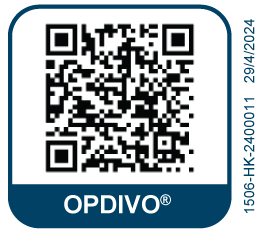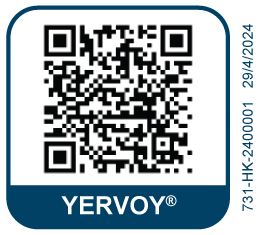Management guidelines for gastrointestinal irAEs
Common gastrointestinal irAE symptoms
International guideline (ASCO, ESMO and NCCN) recommendations for GI irAEs1-3^
^For detailed guidelines, please refer to original publication
| NCCN1 | ESMO2 | ASCO3 | |
|---|---|---|---|
| Grade 1 | Consider holding immunotherapy | Continue immunotherapy | Consider holding immunotherapy |
| Consider diphenoxylate/atropine as an alternative to loperamide If persistent or progressive, but without infection or negative lactoferrin/calprotectin, consider to add mesalamine and/or cholestyramine |
Consider psyllium or spasmolytics | Consider GI consultation for prolonged cases | |
| Monitor hydration1,3; dietary modifications1-3; use of loperamide1-3
Closely monitor1-3, every 3 days via phone or EMS3 |
|||
| Grade 2 | Hold immunotherapy1-3
Corticosteroid use1-3* Consider use of infliximab or vedolizumab for corticosteroid non-responders1-3* For infliximab or vedolizumab-refractory colitis, consider tofacitinib or ustekinumab1 |
||
| For pathologically confirmed microscopic colitis, consider budesonide 9 mg prior to systemic steroids Consider GI consultation |
Symptomatic management | Consider permanently discontinuing CTLA-4 agents Consider GI consultation |
|
| Grade 3 | If using combination IO therapy, discontinue immunotherapy | Hold immunotherapy | Hold immunotherapy Consider permanently discontinuing CTLA-4 agents |
| Consider inpatient care1-3, GI consultation1-3
Corticosteroid use1-3* Strongly consider use of infliximab or vedolizumab for corticosteroid non-responders1-3* For infliximab or vedolizumab-refractory colitis, consider tofacitinib or ustekinumab1 |
|||
| Grade 4† | Discontinue immunotherapy | Hold immunotherapy | Discontinue immunotherapy |
| Strongly consider inpatient care | Strongly consider inpatient care | Provide inpatient care | |
|
Consider inpatient care1-3, GI consultation1-3
Corticosteroid use1-3* Strongly consider use of infliximab or vedolizumab for corticosteroid non-responders1-3* For infliximab or vedolizumab-refractory colitis, consider tofacitinib or ustekinumab1 |
|||
*Consult steroid usage table below for more information
†In all cases, increase the urgency of testing and intervention in Grade 4 patients
ASCO, American Society of Clinical Oncology; CTLA-4, cytotoxic T-lymphocyte-associated protein 4; ESMO, European Society for Medical Oncology; EMS, emergency medical services; GI, gastrointestinal; NCCN, National Comprehensive Cancer Network; IO, immune-oncology.
At Grade 2 or above, work-ups should include blood and stool investigations to assess patient condition and rule out infectious aetiology.2,3 Testing for bacterial, viral and parasitic causes should also be conducted.1–3 Lactoferrin and calprotectin testing can be considered.3 Imaging may be conducted to assess ulceration.2,3
|
NCCN, ESMO, ASCO1-3 |
|||
|---|---|---|---|
| Grade 1 | Grade 2 | Grade 3–4 | |
| Increase of <4 stools per day1-3 Mild increase in ostomy output comapred with baseline3 No colitis symptoms1 |
Increase of 4–6 stools per day and/or moderate increase in ostomy output over baseline1–3
Presence of colitis symptoms1 |
Increase of ≥7 stools per day, incontinence, severe increases in ostomy output compared with baseline, limiting self-care ADL1–3 Colitis symptoms, haemodynamic instability, other serious complications,1 including life-threatening consequences3 |
|
ADL, activities of daily living; ASCO, American Society of Clinical Oncology; ESMO, European Society for Medical Oncology; NCCN, National Comprehensive Cancer Network.
| NCCN1 | ESMO2 | ASCO3 | |
|---|---|---|---|
| Grade 1 | – | – | – |
| Grade 2 | Prednisone/methylprednisolone 1–2 mg/kg/day tapering over 4–6 weeks after achieving Grade 1 (<2–4 weeks if infliximab or vedolizumab were added) |
Oral corticosteroid 40–60 mg/day. Wean over 4–8 weeks. If refractory to corticosteroids, rapid steroid tapering and:
|
Initial dose of 1 mg/kg/day prednisone or equivalent until symptoms improve to G1, and then start taper over 4-6 weeks |
| Grade 3–4 | IV (methyl)prednisolone 1–2 mg/kg/day tapering over 4–6 weeks after achieving Grade 1 (<2–4 weeks if infliximab or vedolizumab were added) Consider use of infliximab or vedolizumab for corticosteroid non-responders |
IV (methyl)prednisolone 1 mg/kg/day; assess response at days 3–5; If response to IV corticosteroids, switch to oral prednisolone 1 mg/kg/day. Wean over 4–8 weeks. If refractory to corticosteroids,
|
Grade 3: Initial dose of 1–2 mg/kg/day prednisone or equivalent, tapering 4-6 weeks once Grade 1 is achieved If concern for concurrent upper GI inflammation, Consider IV methylprednisolone Consider early infliximab or vedolizumab if persistent symptoms after 3 days Grade 4: 1–2 mg/kg/day methylprednisolone or equivalent, tapering over 4–6 weeks once Grade 1 is achieved If symptoms persist after 3 days, consider infliximab or vedolizumab |
*If no response, consider switching to the other biologic, higher-dose infliximab, faecal microbiota transplantation, ustekinumab, extracorporeal photopheresis, colectomy and repeat testing for infections.
ASCO, American Society of Clinical Oncology; ESMO, European Society for Medical Oncology; GI, gastrointestinal; IV, intravenous; NCCN, National Comprehensive Cancer Network.
References:
- National Comprehensive Cancer Network. NCCN Clinical Practice Guidelines in Oncology. Management of immunotherapy-Related Toxicities. Version 1.2025. Available at: https://www.nccn.org/professionals/physician_gls/pdf/immunotherapy.pdf. Accessed March 2025.
- Haanen J, et al. Ann Oncol 2022;33:1217–1238. Available at: https://www.annalsofoncology.org/article/S0923-7534(22)04187-4/fulltext. Accessed March 2025.
- Schneider BJ, et al. J Clin Oncol 2021;39:4073–4126. Available at: https://ascopubs.org/doi/full/10.1200/JCO.21.01440. Accessed March 2025.
- OPDIVO® (nivolumab) Product Information, BMS Hong Kong.
- YERVOY® (ipilumab) Product Information, BMS Hong Kong.




